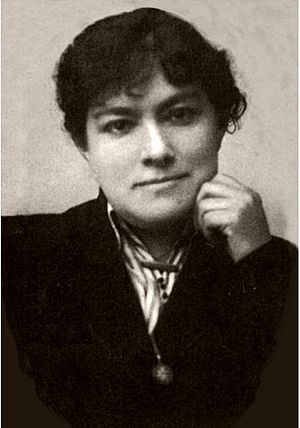Benita Asas Manterola facts for kids
Quick facts for kids
Benita Asas Manterola
|
|
|---|---|
 |
|
| Born | 4 March 1873 |
| Died | 21 April 1968 (aged 95) |
| Nationality | Spanish |
| Known for | Suffragist activism |
Benita Asas Manterola (born March 4, 1873 – died April 21, 1968) was an important Spanish teacher and journalist. She was also a strong supporter of women's rights, especially the right to vote. People who fight for women's right to vote are called suffragists.
Benita Asas's Life and Work
Benita Asas Manterola was born in a city called San Sebastián in Spain. She studied hard to become a teacher. After finishing her training, she worked as a teacher in the public schools of Madrid.
Benita was not just a teacher. She also cared deeply about women's voices. With her friend Pilar Fernández Selfa, she started a magazine called El Pensamiento Femenino. This magazine was published twice a month from 1913 to 1917. It was a way for women to share their ideas and thoughts.
From 1924 to 1932, Benita became the president of a very important group. This group was called the Asociación Nacional de Mujeres Españolas (ANME), which means the National Association of Spanish Women. As president, she worked to make things better for women in Spain.
Starting in 1925, she also managed ANME's own monthly newspaper, Mundo Feminino (Women's World). In 1929, she traveled to represent ANME at a big meeting. This meeting was the international congress of the Women's International League for Peace and Freedom.
Benita also helped start another important club in Madrid. It was called the Lyceum Club Femenino Español. This club was a place where women could meet, learn, and discuss ideas. It was created by another famous woman named Maria de Maeztu Whitney.
Benita Asas Manterola passed away in Bilbao in 1968.
Benita Asas's Legacy
Benita Asas Manterola left a lasting mark on history. She helped women gain more rights and a stronger voice in society.
In 2017, the city of Bilbao decided to honor her. They renamed a street after her. This was done to recognize her important work in defending women's rights. It shows how much her efforts were valued.
See also
 In Spanish: Benita Asas para niños
In Spanish: Benita Asas para niños

